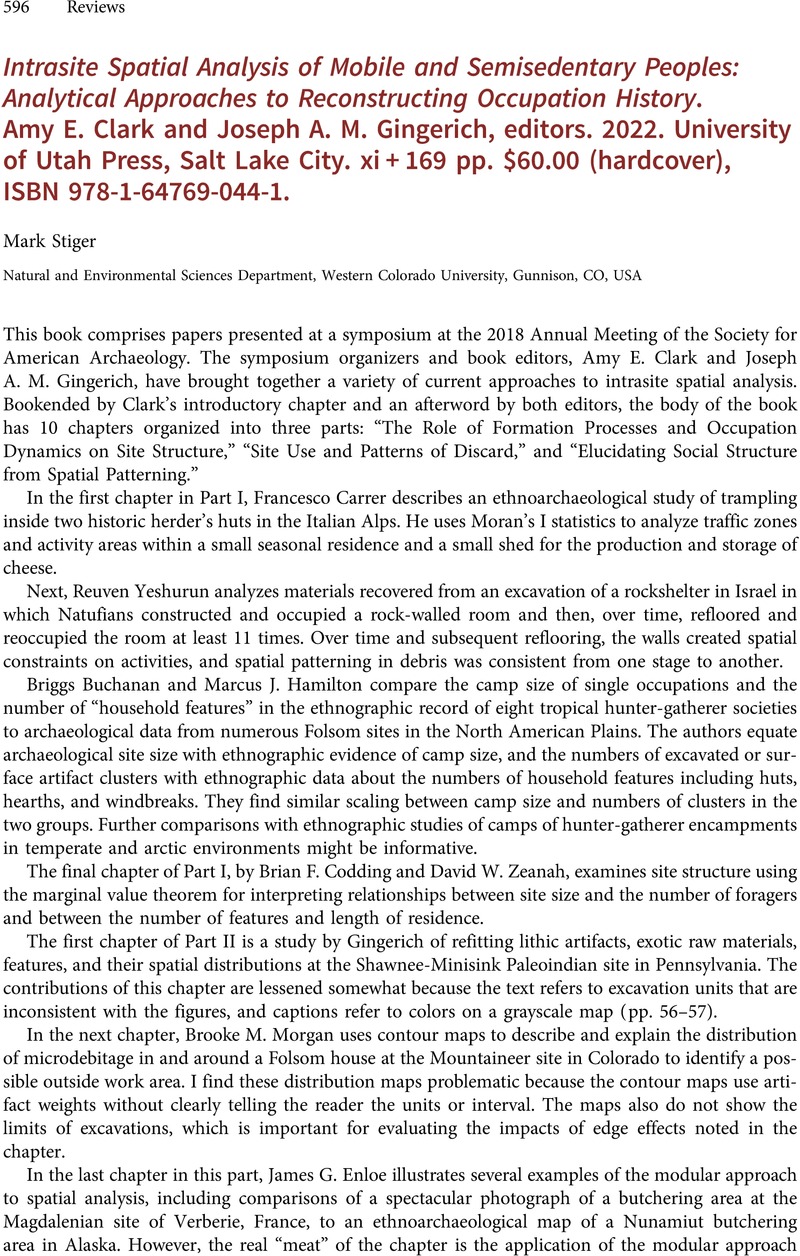No CrossRef data available.
Article contents
Intrasite Spatial Analysis of Mobile and Semisedentary Peoples: Analytical Approaches to Reconstructing Occupation History. Amy E. Clark and Joseph A. M. Gingerich, editors. 2022. University of Utah Press, Salt Lake City. xi + 169 pp. $60.00 (hardcover), ISBN 978-1-64769-044-1.
Review products
Intrasite Spatial Analysis of Mobile and Semisedentary Peoples: Analytical Approaches to Reconstructing Occupation History. Amy E. Clark and Joseph A. M. Gingerich, editors. 2022. University of Utah Press, Salt Lake City. xi + 169 pp. $60.00 (hardcover), ISBN 978-1-64769-044-1.
Published online by Cambridge University Press: 21 September 2023
Abstract
An abstract is not available for this content so a preview has been provided. Please use the Get access link above for information on how to access this content.

- Type
- Review
- Information
- Copyright
- Copyright © The Author(s), 2023. Published by Cambridge University Press on behalf of the Society for American Archaeology


